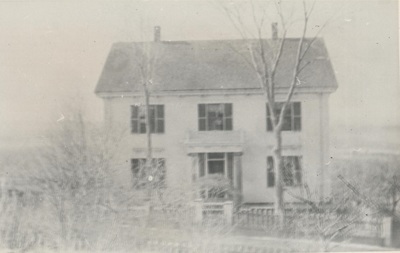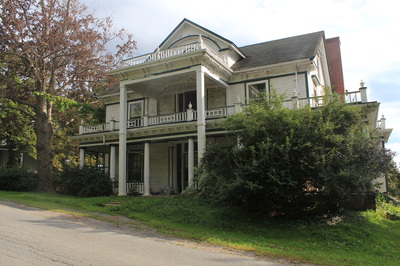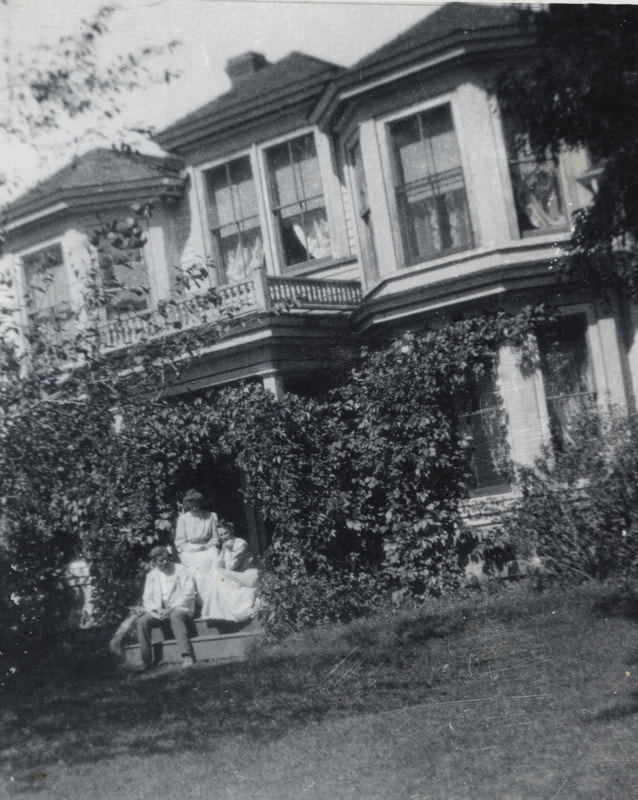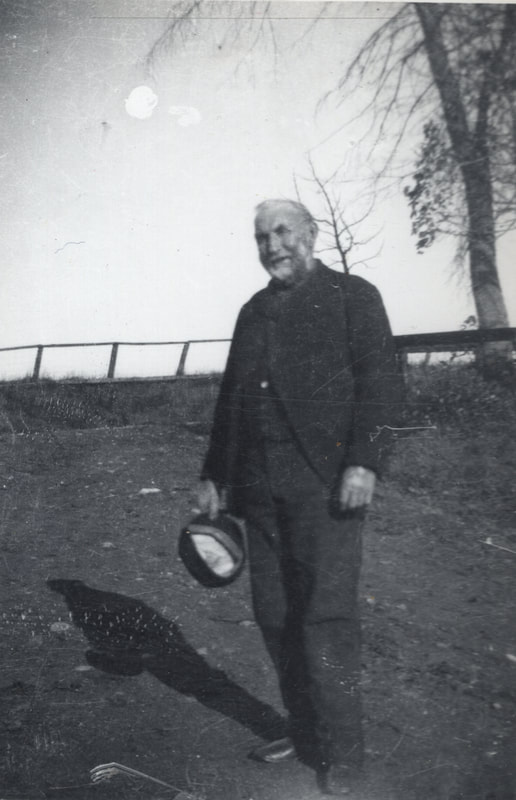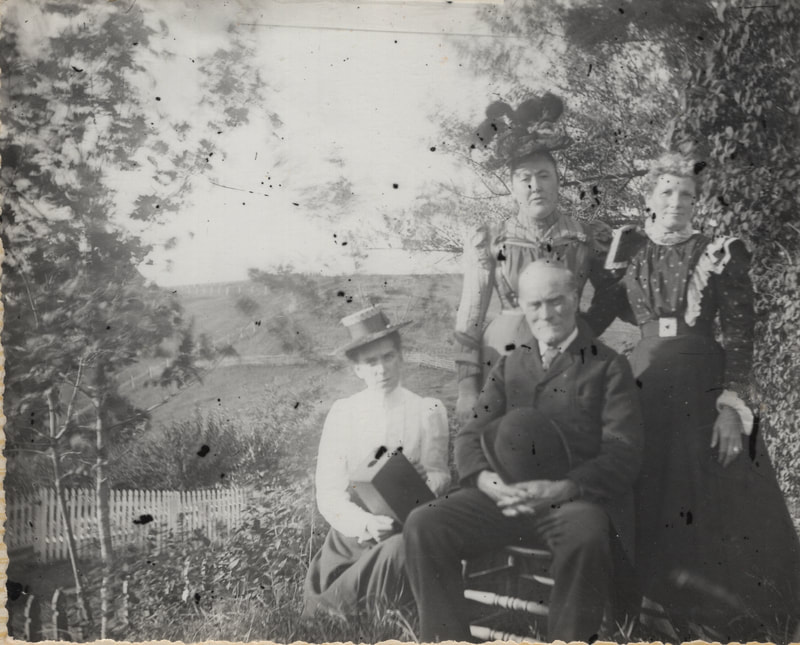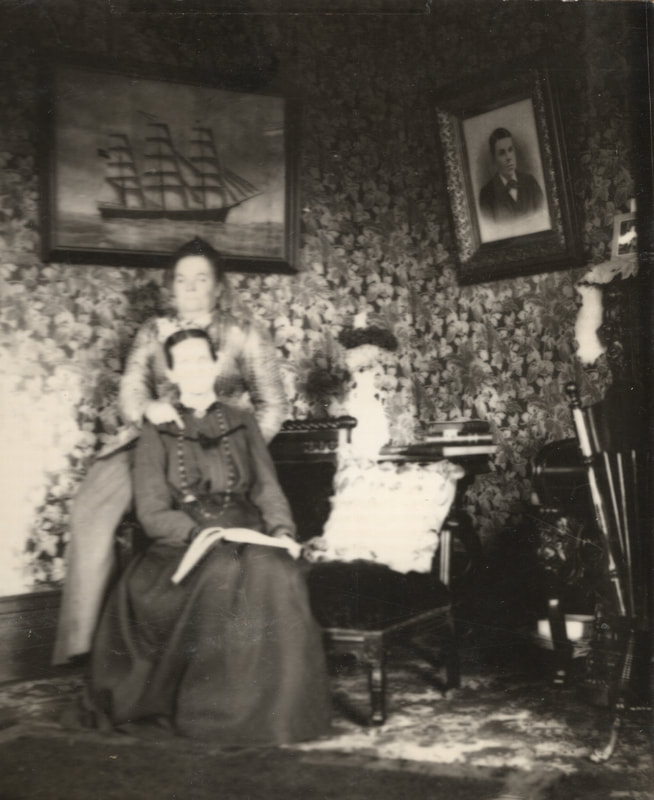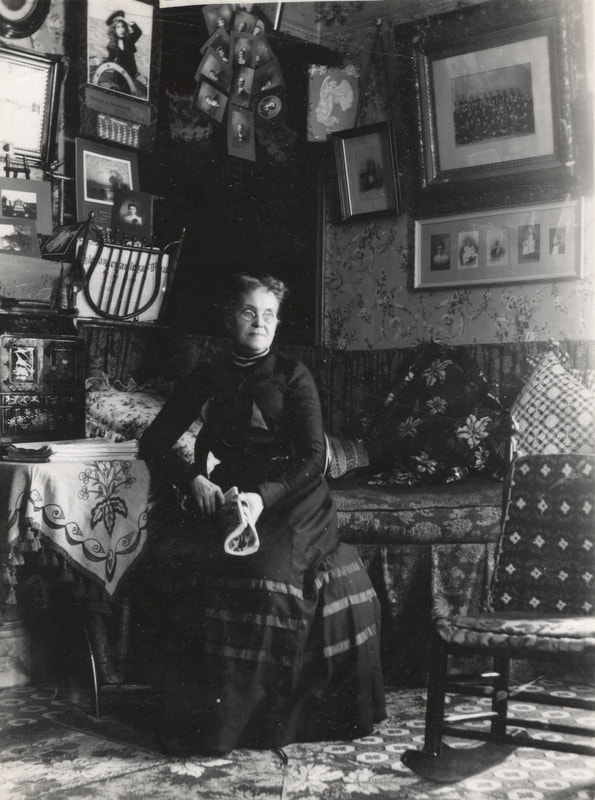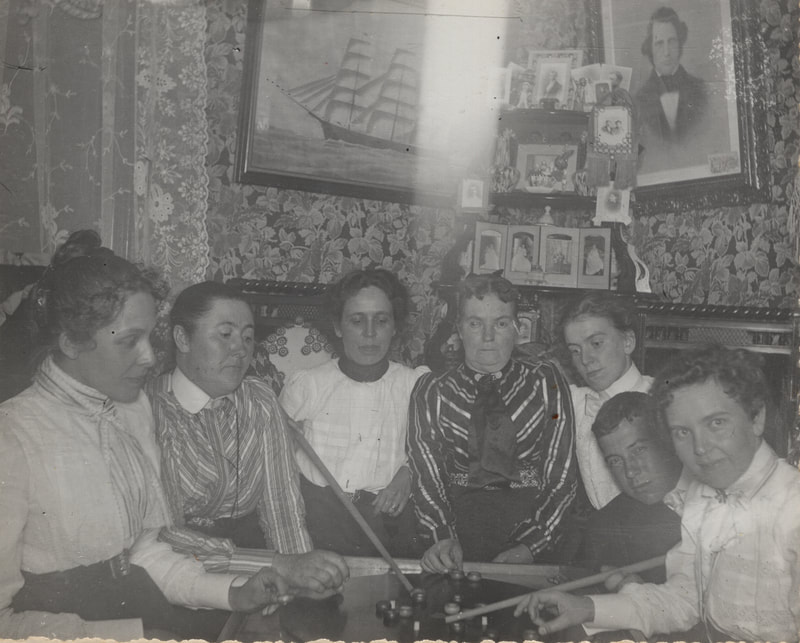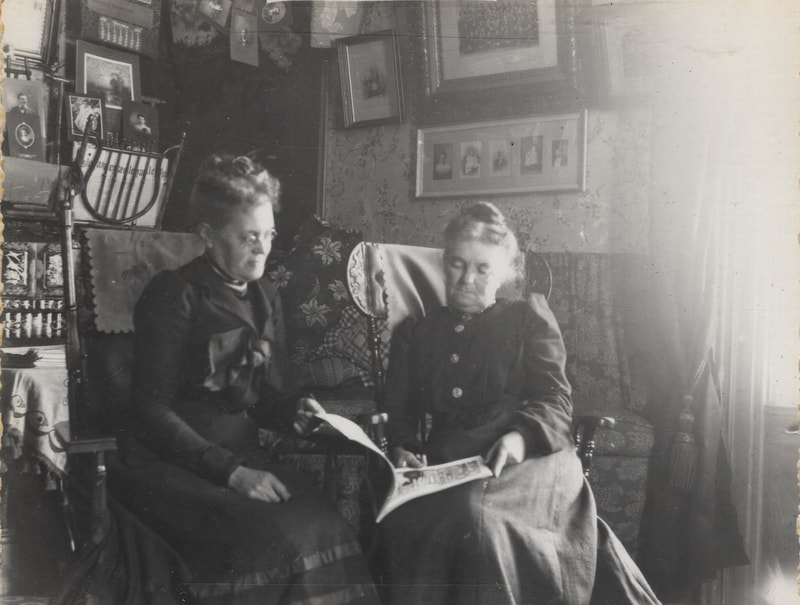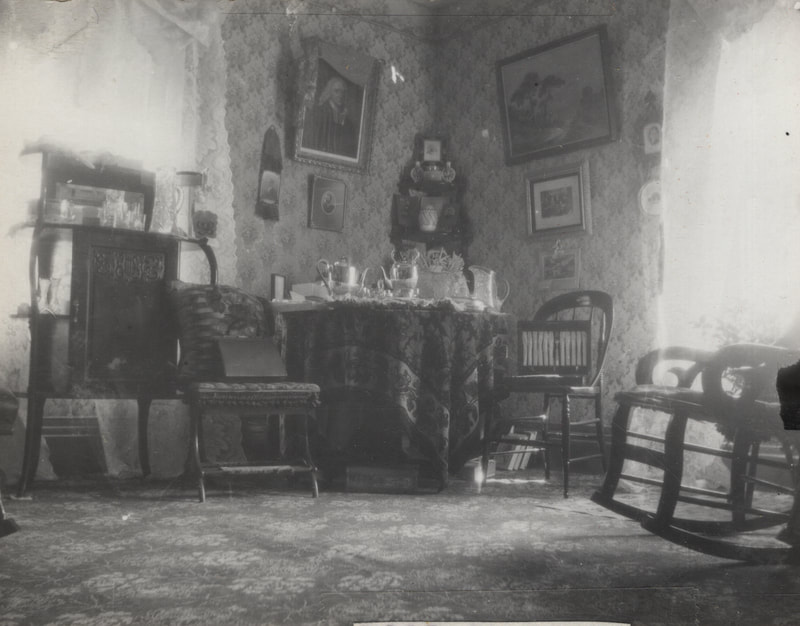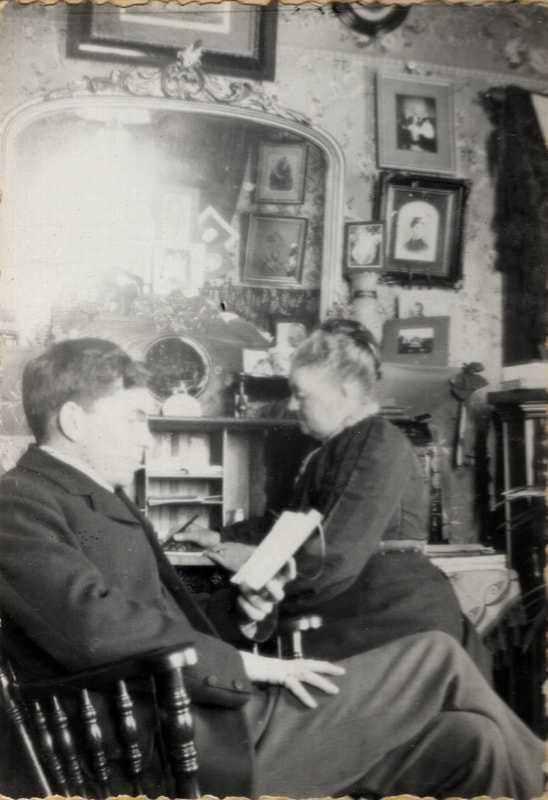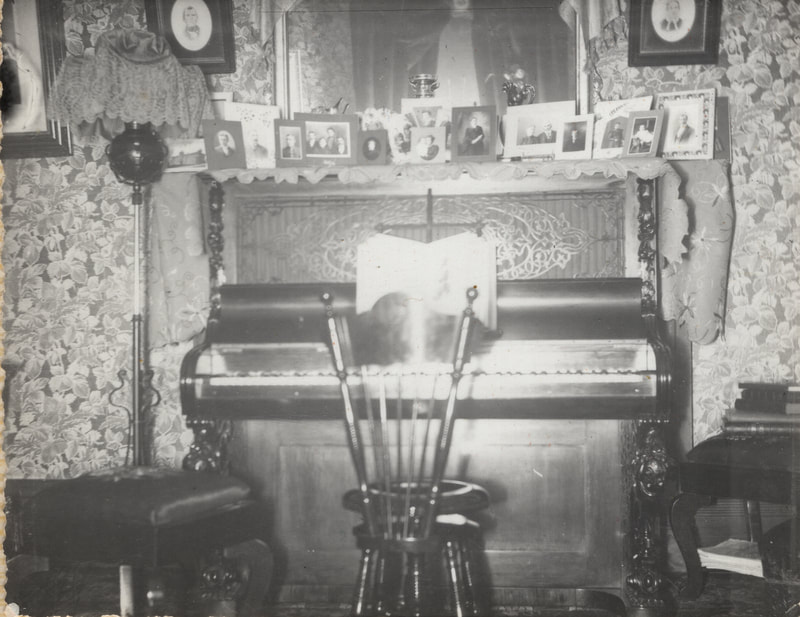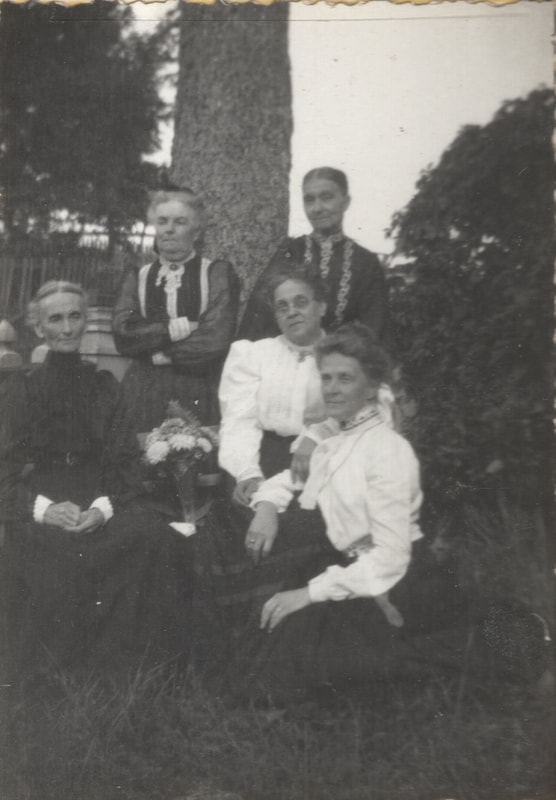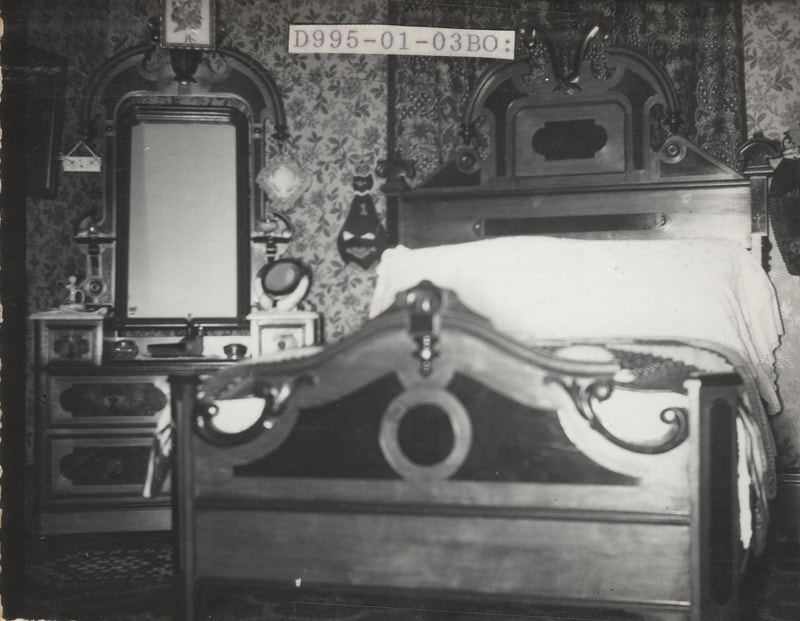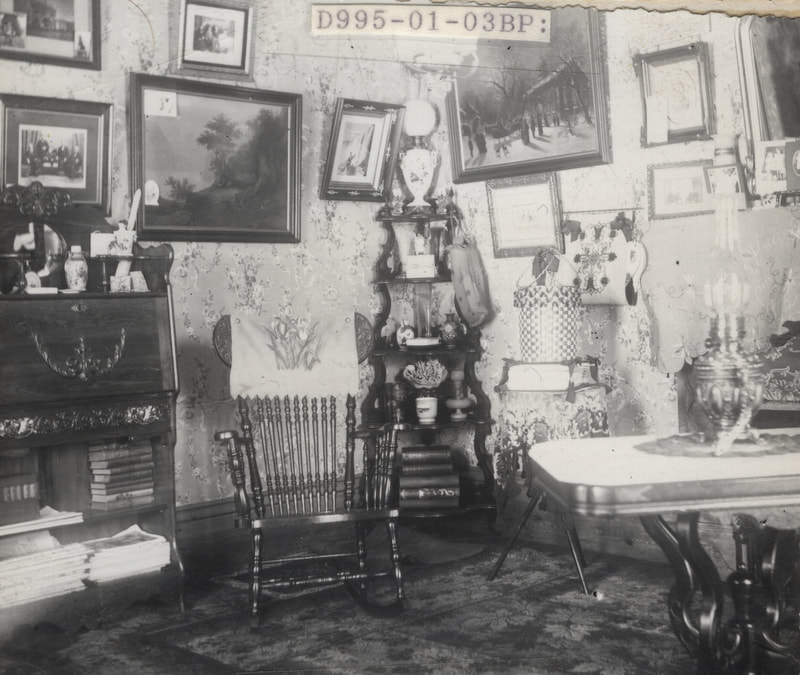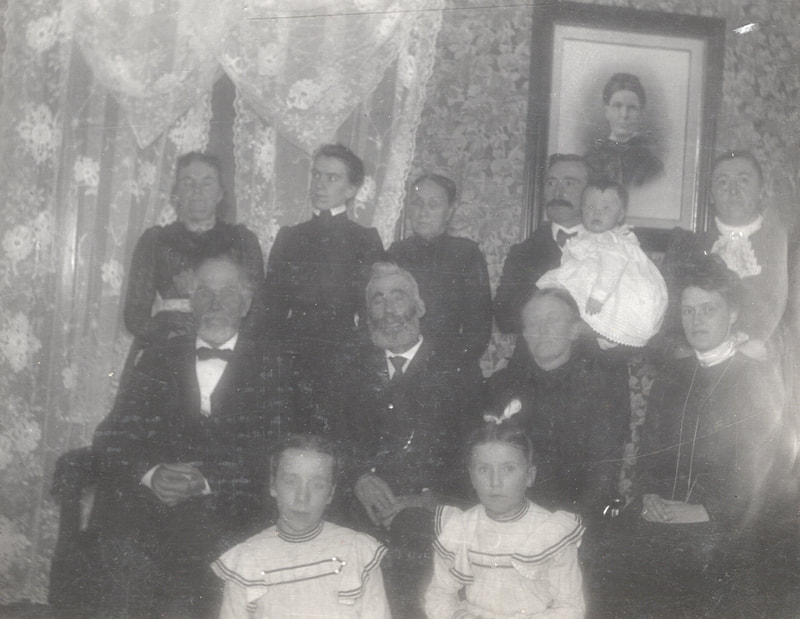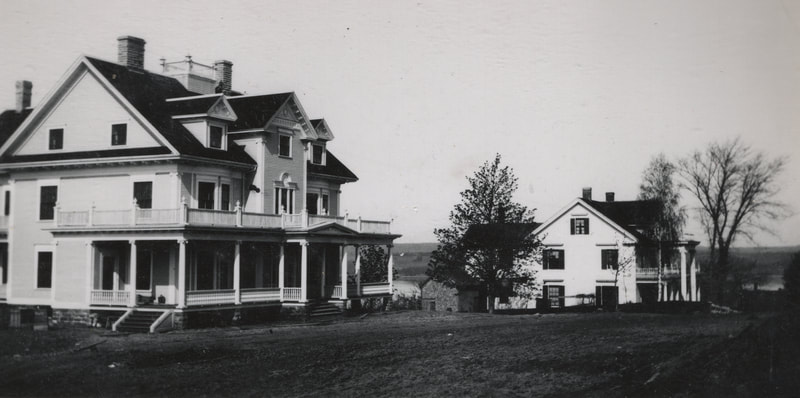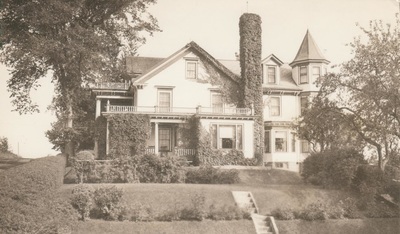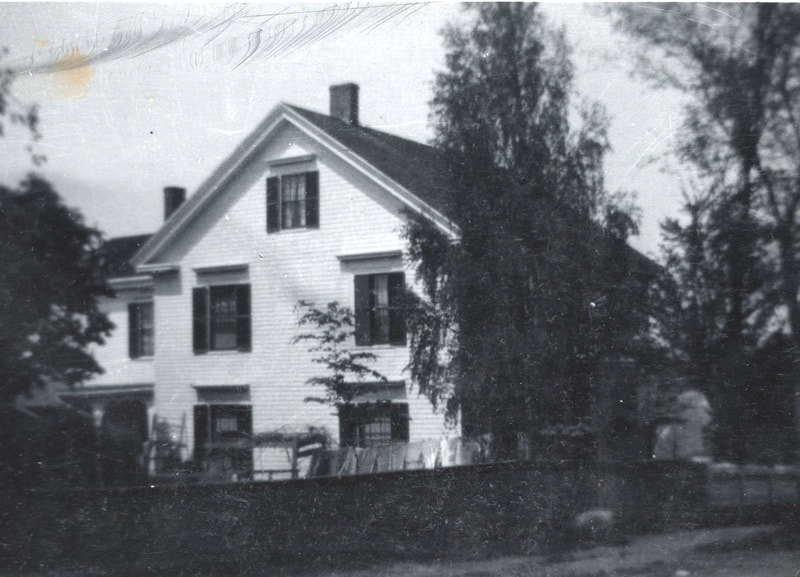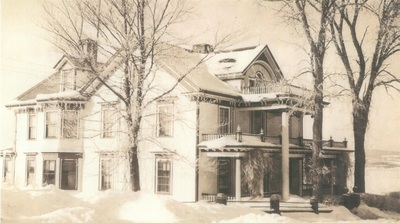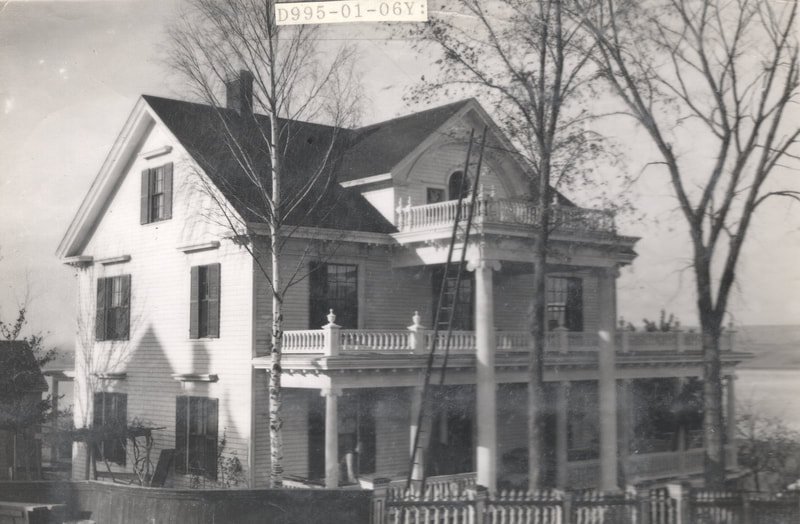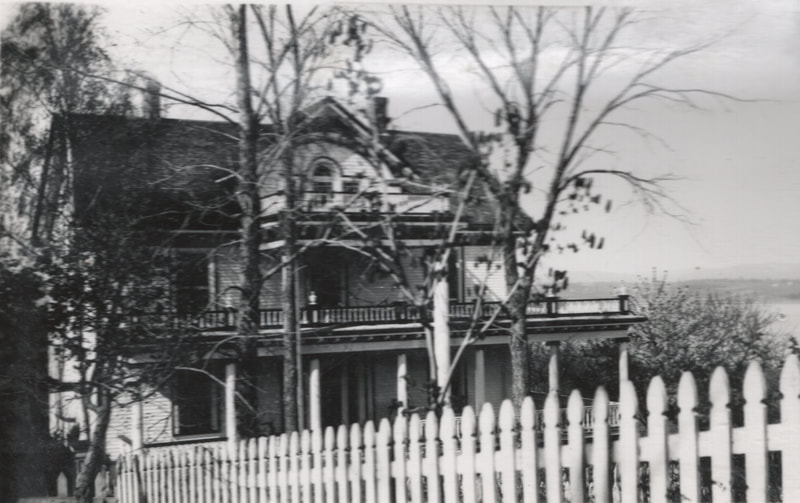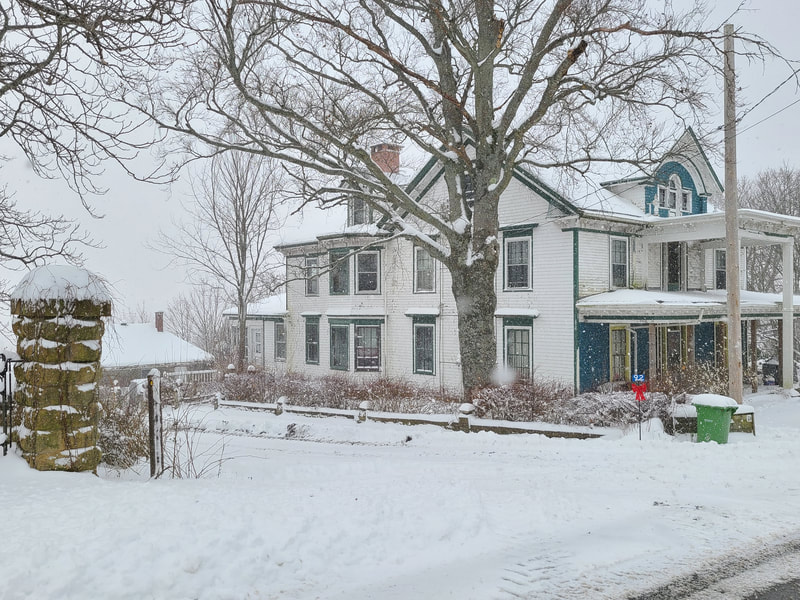Captain George R. Mounce House
George Richard Mounce was the son of Richard Mounce who came to the Lawrencetown area from Rhode Island about 1800 to operate a grist mill just outside the village. After his father passed away, George’s mother moved to Highfield and eventually married Ezekiel Masters of Scotch Village. Unfortunately, George did not get along well with his step father, probably because of harsh treatment and having to work at making shoes, a job he detested. At sixteen he ran ferry wharf until the shop burned down. Fearing some blame for the fire, he quickly signed on as crew in a small schooner commanded by Capt. Card and bound for England. That was the start of his sea-going career.
After a few years at sea, he came ashore and studied navigation, which was then taught by many school teachers in Nova Scotia. With that knowledge he was able to work his way up, eventually getting his master’s certificate. He married Rebecca Mosher who went to sea with him for some years. He had three children by this first marriage, only two of which arrived to maturity. Rebecca died giving birth to the third child. His second wife was Annie Elizabeth Armstrong, a school teacher living in Avondale with a strong attachment to the sea as both her father and grandfather were sea captains.
George had two sons by his second marriage, Thomas Henry Armstrong Mounce and Ralph Brecken Mounce. Thomas married Annie Mosher and there was one daughter who died in infancy. Annie died after five years of marriage. Thomas died in 1960. Ralph died in 1972. He had one son, George Ralph, Avondale.
In the 1860’s George built a house in Avondale and went to sea on an occasional basis thereafter. He began buying shares in the ships then being built along the Minas Shore which led to an alliance with the firm of Andrew Gibson of Liverpool, England. The arrangement with Gibson is not known in detail but it is evident that George placed the orders and supervised the building of a number of vessels in various yards from Windsor to Maitland. As well, he had a financial interest in many of these vessels. The life of a Nova Scotia vessel of that period was often short and of dubious financial benefit so it was prudent to own a little of a number of ships rather than staking the financial return of a single vessel.
There are a number of stories about George which give a slight insight into his character. His favourite expression was “God how”. He must have had a tenacious make-up since he survived mutiny, Bubonic Plague, Yellow Jack and being under fire from the guns of Gibraltar. He dressed up only for special events such as his marriage or a funeral. Apparently, one of his trademarks was to go with one pant leg inside his sea boot and the other caught at the top.
George Richard Mounce died in 1909 at the age of 85.
George Richard Mounce was the son of Richard Mounce who came to the Lawrencetown area from Rhode Island about 1800 to operate a grist mill just outside the village. After his father passed away, George’s mother moved to Highfield and eventually married Ezekiel Masters of Scotch Village. Unfortunately, George did not get along well with his step father, probably because of harsh treatment and having to work at making shoes, a job he detested. At sixteen he ran ferry wharf until the shop burned down. Fearing some blame for the fire, he quickly signed on as crew in a small schooner commanded by Capt. Card and bound for England. That was the start of his sea-going career.
After a few years at sea, he came ashore and studied navigation, which was then taught by many school teachers in Nova Scotia. With that knowledge he was able to work his way up, eventually getting his master’s certificate. He married Rebecca Mosher who went to sea with him for some years. He had three children by this first marriage, only two of which arrived to maturity. Rebecca died giving birth to the third child. His second wife was Annie Elizabeth Armstrong, a school teacher living in Avondale with a strong attachment to the sea as both her father and grandfather were sea captains.
George had two sons by his second marriage, Thomas Henry Armstrong Mounce and Ralph Brecken Mounce. Thomas married Annie Mosher and there was one daughter who died in infancy. Annie died after five years of marriage. Thomas died in 1960. Ralph died in 1972. He had one son, George Ralph, Avondale.
In the 1860’s George built a house in Avondale and went to sea on an occasional basis thereafter. He began buying shares in the ships then being built along the Minas Shore which led to an alliance with the firm of Andrew Gibson of Liverpool, England. The arrangement with Gibson is not known in detail but it is evident that George placed the orders and supervised the building of a number of vessels in various yards from Windsor to Maitland. As well, he had a financial interest in many of these vessels. The life of a Nova Scotia vessel of that period was often short and of dubious financial benefit so it was prudent to own a little of a number of ships rather than staking the financial return of a single vessel.
There are a number of stories about George which give a slight insight into his character. His favourite expression was “God how”. He must have had a tenacious make-up since he survived mutiny, Bubonic Plague, Yellow Jack and being under fire from the guns of Gibraltar. He dressed up only for special events such as his marriage or a funeral. Apparently, one of his trademarks was to go with one pant leg inside his sea boot and the other caught at the top.
George Richard Mounce died in 1909 at the age of 85.
George Richard Mounce était le fils de Richard Mounce qui a venu à Lawrencetown de la région de Rhode Island environ 1800 pour marcher un moulin de grain proche du village. Après que son père mourait, la mère de George se déplaçait vers Highfield et éventuellement a marié Ezekiel Masters de Scotch Village. Malheureusement, George entendait mal avec son beau-père, probablement à cause de son traitement sévère et parce qu’il devait fabriquer les chaussures, un travail qu’il a détesté. À 16 ans il a dirigé un quai à ferry jusqu’à il était détruit par le feu. Avant le peur de d’être accuser, il a rapidement inscrit pour être l’équipage d’une petite goélette, commander par Capitaine Card et en direction d’Angleterre. Ceci était la commencement de son carrière de mer.
Après quelques ans en mer, il a venu vers la rive et a étudié la navigation, qui a ces temps était enseigner par plusieurs professeurs des écoles en Nouvelle-Écosse. Avec ces connaissons il était capable d’éventuellement recevoir son certificat master. Il a marié Rebecca Mosher qui allait à la mer avec lui pour quelques ans. Il avait trois enfants par cette première mariage, seulement deux de lesquels ont arrivé à maturité. Rebbeca a mort en donnant naissance à la troisième enfant. Son deuxième femme était Annie Elizabeth Armstrong, un professeur d’école vivant en Avondale avec un attachement fort à la mer car sa père et sa grand-père était les commandants de vaisseau.
George avait deux fils par son deuxième mariage, Thomas Henry Armstrong et Ralph Brecken Mounce. Thomas a marié Annie Mosher et il y avait une fille qui est mort en ses débuts. Annie est mort après 5 ans de mariage. Thomas est mort en 1960. Ralph est mort en 1972. Il avait un fils, George Ralph, Avondale.
En les 1860’s George a construit une maison en Avondale et est allé en mer à un basis occasionnel par la suite. Il a commencé à acheter les actions dans les navires qui à ce moment était en train d’être construit le long de la Minas Shore qui a mené à une alliance avec la firme d’Andrew Gibson de Liverpool, Angleterre. L’arrangement avec Gibson n’est pas connu en détail mais c’est évident que George a passé les ordres et a supervisé la construction d’un nombre de vaisseaux dans plusieurs chantiers navals de Windsor à Maitland. Aussi, il avait in intérêt financier dans plusieurs de ces vaisseaux. La vie d’un vaisseau de la Nouvelle-Écosse de cette période était souvent courte et d’avantage financier douteux alors c’était prudent de posséder un petit nombre de navires plutôt que prendre les risque du retour financier d’un seul vaisseau.
Il y a un nombre d’histoires à propos George qui donne une perspicacité légère de son caractère. Son expression préférée était « God how ». Il devait avoir une personnalité tenace puisque il a survécu mutinerie, Bubonic Plague, Yellow Jack, et étant sous les feux des fusils de Gibraltar. Il a bien s’habillé seulement pour les grandes occasions tel que son mariage ou un enterrement. Apparemment, un de ces signes caractéristiques était de porter une jambe de pantalon dedans son botte et l’autre attrapé en haut de l’autre botte.
George Richard Mounce est mort en 1909 à l’âge de 85.
Après quelques ans en mer, il a venu vers la rive et a étudié la navigation, qui a ces temps était enseigner par plusieurs professeurs des écoles en Nouvelle-Écosse. Avec ces connaissons il était capable d’éventuellement recevoir son certificat master. Il a marié Rebecca Mosher qui allait à la mer avec lui pour quelques ans. Il avait trois enfants par cette première mariage, seulement deux de lesquels ont arrivé à maturité. Rebbeca a mort en donnant naissance à la troisième enfant. Son deuxième femme était Annie Elizabeth Armstrong, un professeur d’école vivant en Avondale avec un attachement fort à la mer car sa père et sa grand-père était les commandants de vaisseau.
George avait deux fils par son deuxième mariage, Thomas Henry Armstrong et Ralph Brecken Mounce. Thomas a marié Annie Mosher et il y avait une fille qui est mort en ses débuts. Annie est mort après 5 ans de mariage. Thomas est mort en 1960. Ralph est mort en 1972. Il avait un fils, George Ralph, Avondale.
En les 1860’s George a construit une maison en Avondale et est allé en mer à un basis occasionnel par la suite. Il a commencé à acheter les actions dans les navires qui à ce moment était en train d’être construit le long de la Minas Shore qui a mené à une alliance avec la firme d’Andrew Gibson de Liverpool, Angleterre. L’arrangement avec Gibson n’est pas connu en détail mais c’est évident que George a passé les ordres et a supervisé la construction d’un nombre de vaisseaux dans plusieurs chantiers navals de Windsor à Maitland. Aussi, il avait in intérêt financier dans plusieurs de ces vaisseaux. La vie d’un vaisseau de la Nouvelle-Écosse de cette période était souvent courte et d’avantage financier douteux alors c’était prudent de posséder un petit nombre de navires plutôt que prendre les risque du retour financier d’un seul vaisseau.
Il y a un nombre d’histoires à propos George qui donne une perspicacité légère de son caractère. Son expression préférée était « God how ». Il devait avoir une personnalité tenace puisque il a survécu mutinerie, Bubonic Plague, Yellow Jack, et étant sous les feux des fusils de Gibraltar. Il a bien s’habillé seulement pour les grandes occasions tel que son mariage ou un enterrement. Apparemment, un de ces signes caractéristiques était de porter une jambe de pantalon dedans son botte et l’autre attrapé en haut de l’autre botte.
George Richard Mounce est mort en 1909 à l’âge de 85.
